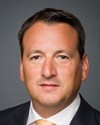Thank you, Mr. Chair. Welcome to our committee, to all our witnesses. I'm going to take the first part of the seven minutes for some questions for Statistics Canada, particularly around some of the health data that are contained in your presentation. Then I'll move to some questions for FNSI.
I should make the pre-emptive statement that I'm relieved that this government seems to be on the right track when we look at our accomplishments so far and what we propose in the economic plan. Our job, of course, is to shape policy around a qualitative analysis of the quantitative data that's here. Our priorities in the areas of education, training, housing, infrastructure, and maternal child health seem to be on the right track, but I want to make some sense of a few of these pages.
Some of it builds on Mr. Russell's line of thinking. If we go to page 14, we have what I would consider a fair degree of satisfaction, even if it is perception, with health facilities. Perhaps, Cathy, you could comment on where that satisfaction might come from. Does that include services? What does the word “facilities” mean, because 77% of the people surveyed there had a good or excellent or very good perception of the services in their community?
Before you answer that, I'm going to pull in pages 26, 27, and 28, because they round out our analysis with respect to a couple of interesting points in terms of health services for Inuit people and their degree of satisfaction. I think the statement could be made that the fact that we've identified increases in certain disease processes, particularly high blood pressure, which is more often a symptom of another disease process, means that access to services has to necessarily be improved in the communities because we're identifying more of those. Whether it's diagnostic or access to some kind of primary health care, there may in fact be an improvement and more comprehensive care. Do you have any data on the satisfaction about that care to the extent that it might be different on page 14 as the question is asked?
I ask these questions for some very specific reasons, obviously. I spent eight years working as a nurse in isolated communities across the Arctic and several provinces. I can say that the access to services, particularly around prenatal services, work-ups for diabetics or for even looking at diabetes, and the advancements we've made in a number of communities to getting things like telopthamology services, portable services in communities like Pikangikum, Kitchenuhmaykoosib Inninuwug, and Muskrat Dam, and KO Telemedicine has in fact improved the access to services in those communities. Quite frankly, as a nurse practising the extended role and for nurse practitioners, which I know is a growing profession in those communities, there is increased access to services, and these support it, although it may not be obvious.
I'm sorry for that rather lengthy question. It may only require a short response. Could you comment on that?



